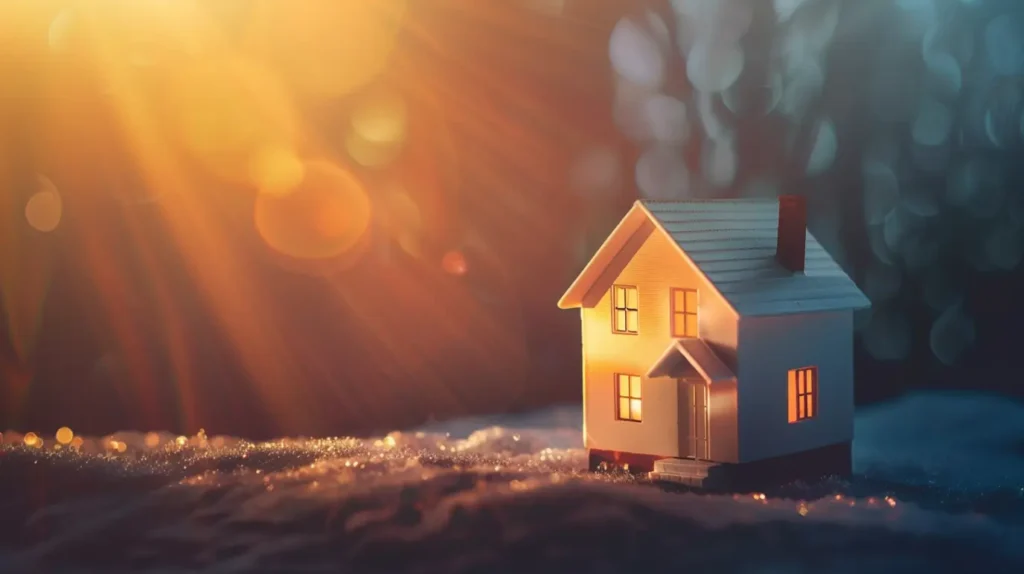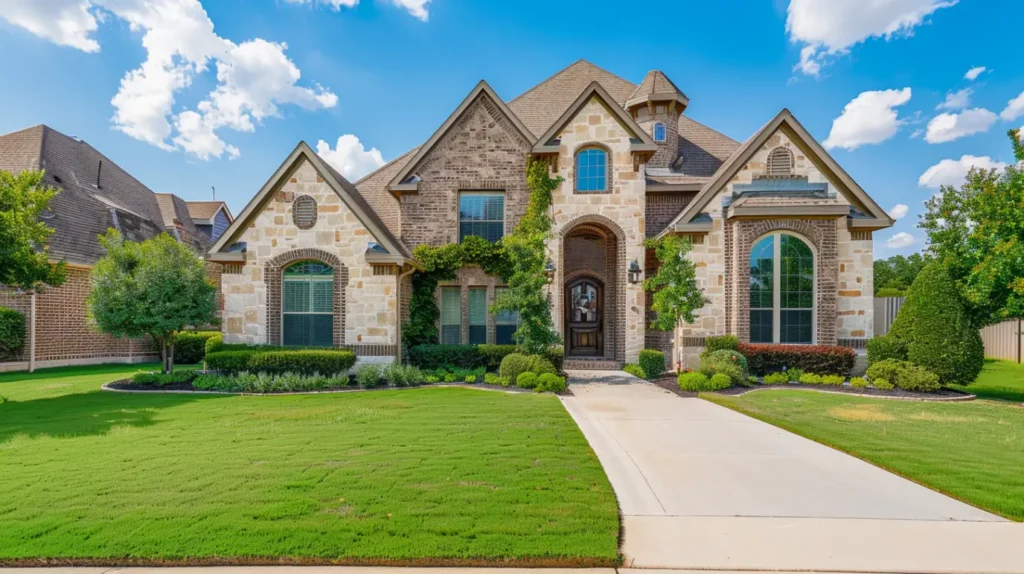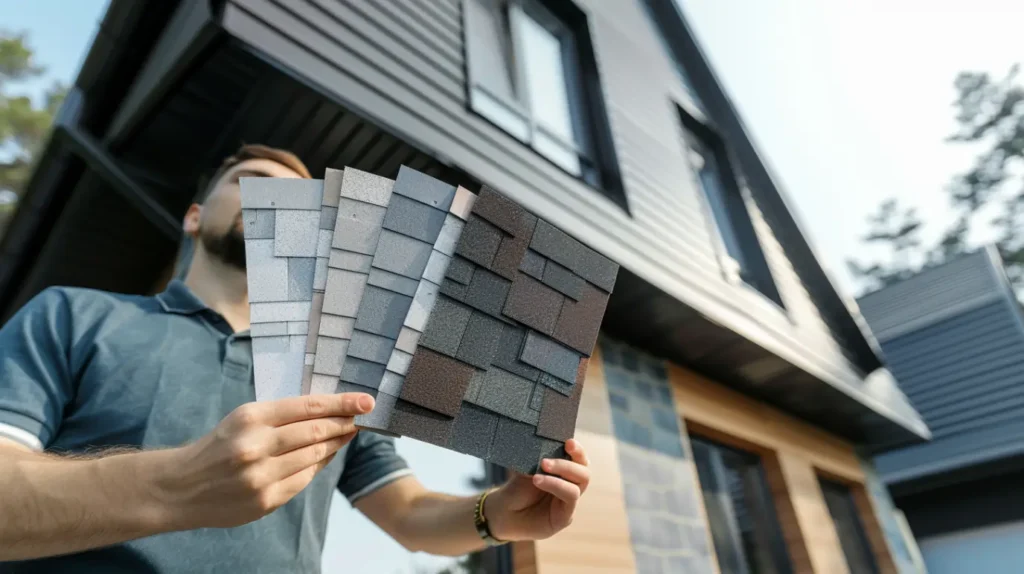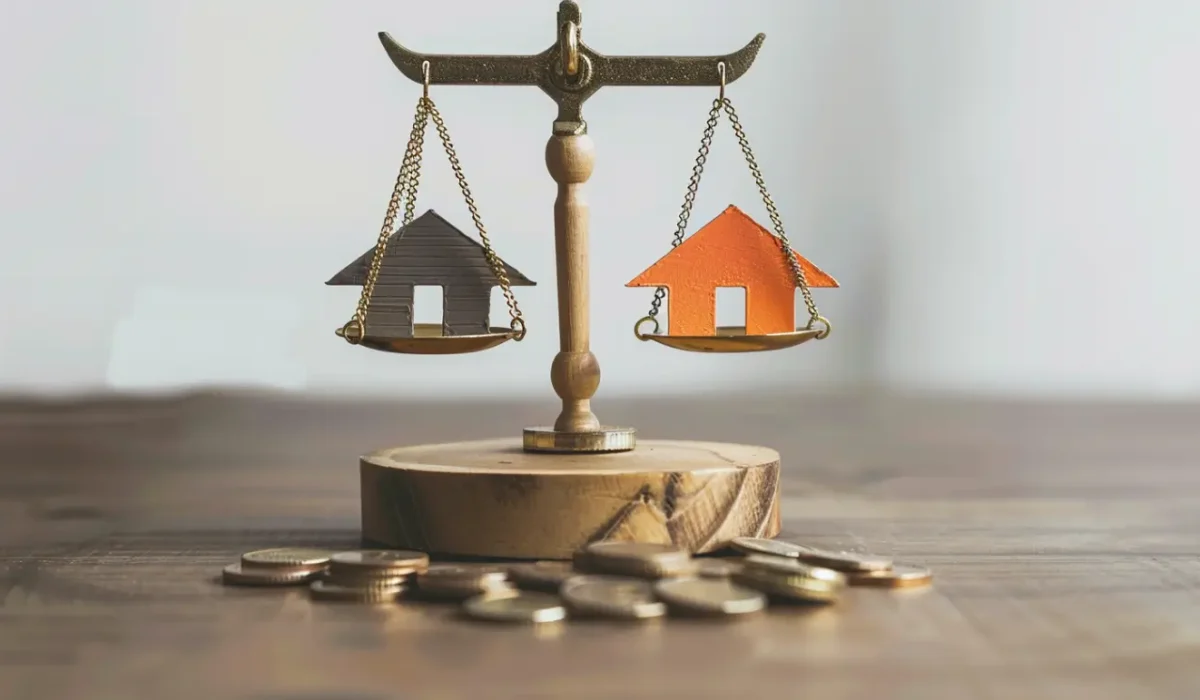Texas heat is no joke, and it can bear down heavily on your roof shingles and the energy efficiency of your home. At KangaRoof, we understand that whether you’re replacing a roof or selecting shingles for a new installation, the color of your roof matters more than you might think in Grapevine, TX. Our team is dedicated to helping you understand how roofing materials and colors interact with the Texas climate, ensuring you maintain lower cooling costs and create a comfortable indoor space. This decision shouldn’t be taken lightly, especially in a state where temperatures often exceed triple digits, and we’re here to guide you every step of the way.
The Texas Heat Challenge: Why Roof Color Matters
When the Texas summer is in full swing, the roof color of your home becomes an impactful factor. Darker shingle colors absorb the sun’s rays directly, warming the home’s interior and raising energy demands. On the other hand, lighter shingles can limit the amount of heat trapped inside, aiding energy efficiency.
For homeowners in regions like Grapevine, the combination of triple-digit heat and rising utility bills makes choosing the proper shingle colors an essential decision. Let’s examine how Grapevine’s climate adds unique roofing demands.
Contact Us

Grapevine’s Climate and Its Unique Roofing Demands
Grapevine experiences a dynamic climate characterized by hot summers and cool winters, making the choice of roofing materials critical. Roofing systems in this region must endure significant sun exposure, which drives up the temperatures on darker shingles. The durability of your roof and its ability to maintain energy efficiency directly impacts indoor temperatures and utility bills. Homeowners should consider the color of their roof shingles to not only enhance aesthetic appeal but also to effectively manage heat absorption and cooling costs throughout the year.
How Sun Exposure Impacts Roof Temperatures
Intense sunlight plays a significant role in determining the temperatures of roofing materials. Darker colors, such as black roof shingles, absorb more heat, resulting in increased indoor temperatures during hot summer months. This heat absorption can lead to greater reliance on air conditioning systems, ultimately raising utility bills. Conversely, lighter shingles reflect the sun’s rays, helping to keep homes cooler and potentially enhancing your home’s energy efficiency. Understanding the effects of sun exposure is crucial for optimizing roof longevity and performance in regions like Texas.

Dark Shingles: Pros and Cons for Texas Homes
Dark shingles can bring aesthetic appeal and are often chosen for versatile roofing styles, but also absorb more heat than lighter counterparts. This higher heat absorption can increase cooling costs in Texan homes and lead to faster wear on roofing materials.
On the positive side, darker colors can offer superior protection during colder climates and align with popular design preferences for a striking roof replacement. However, their place in Texas homes should be weighed carefully against the climate’s energy efficiency demands. Let’s delve into heat absorption next.
Heat Absorption and Energy Efficiency
Darker colored shingles are known to absorb significantly more heat compared to their lighter counterparts. This heat absorption can lead to higher indoor temperatures, increasing the demand on your air conditioning system during Texas’s scorching summer months. Consequently, homeowners may experience a notable rise in energy bills. Opting for lighter shingles can minimize heat retention, thus enhancing your home’s energy efficiency. Ultimately, selecting the right roof color not only affects your comfort but also plays a considerable role in long-term utility costs.
Aesthetic Appeal and Home Value
Choosing the right roof shingle color can significantly enhance your home’s curb appeal and overall value. Darker shingles, while efficient at absorbing warmth, can create a striking contrast against your home’s exterior, elevating its aesthetic charm. In contrast, lighter shingles provide a contemporary look and can help keep indoor temperatures regulated, appealing to potential buyers. Ultimately, the color of your roof plays a significant role in your property’s appeal, influencing perceptions and potential resale value in a competitive market.
Durability in Intense Sunlight
Exposed to relentless Texas sunlight, the durability of roofing materials becomes paramount. Darker shingles may experience accelerated wear from UV rays, leading to degradation over time, while lighter options often exhibit enhanced resistance to fading. The choice of roofing system directly influences long-term performance and can significantly impact the lifespan of your roof. Adequate maintenance and the right materials not only enhance aesthetics but also ensure robust defense against moisture buildup and water damage, thus promoting the overall longevity of your home’s roofing system.

Light Shingles: Benefits and Drawbacks
Light shingles reflect more sunlight, reducing heat absorption and keeping your home cooler during Texas’ hotter months. This superior reflectivity can significantly lower cooling costs, making them an energy-efficient choice for residential properties.
However, lighter shingles may lack the dramatic aesthetic appeal often linked with darker shades. Their subtle appearance might not resonate with homeowner preferences seeking bolder roofing styles. Selecting lighter roofing options depends heavily on balancing curb appeal with practical performance under the sweltering sun. Let’s explore reflectivity further.
Reflectivity and Cooling Potential
Reflectivity plays a crucial role in determining a roof’s cooling potential, particularly in regions like Texas where hot summer months can lead to increased energy bills. Lighter roof colors enhance energy efficiency as have a greater ability to reflect the sun’s rays, resulting in lower indoor temperatures and less reliance on air conditioning. Conversely, darker shingles, while aesthetically pleasing, absorb significant heat, which can drive up cooling costs and impact the durability of your roofing system over time.
Appearance and Curb Appeal in Texas Neighborhoods
The visual impact of your roof plays a significant role in your home’s overall aesthetic appeal. In Texas neighborhoods, where architectural styles vary, the color of your shingles can either complement or detract from your home’s character. Lighter shingles can create a fresh, inviting look, while darker shades may add a touch of elegance and sophistication. With plenty of testing indicating preferences among homeowners, choosing the right roof color not only enhances curb appeal but may also influence local property values.
Lifespan Under Harsh UV Rays
Exposure to harsh UV rays significantly impacts the lifespan of roof shingles. Dark shingles tend to absorb more heat, leading to accelerated wear and tear as can degrade faster when faced with extreme sunlight. In contrast, lighter shingles reflect sun’s rays, which often translates to a longer lifespan and reduced likelihood of moisture buildup. Material quality also plays a crucial role; high-quality asphalt shingles designed to withstand UV damage enhance durability. Choosing the right color and materials can extend the roof’s longevity in Texas heat.

Comparing Leading Brands: Malarkey, GAF, and OC Shingles
Malarkey, GAF, and OC Shingles represent three prominent roofing brands, each offering unique advantages for homeowners in Texas. Malarkey shingles highlight their durability and energy efficiency, making them a popular choice for mitigating heat absorption during the sweltering summer months. GAF shingles are recognized for their extensive color options and advanced technology that enhances moisture management, proving vital for longevity. OC shingles stand out with their aesthetic appeal and robust warranty options, ensuring that the integrity of your roofing system is well-protected against Texas’ harsh conditions.
Features of Popular Dark Shingle Options
Dark shingles offer distinct advantages that cater to both aesthetics and functionality. Known for their ability to withstand harsh UV rays, these shingles enhance roof durability while providing a robust barrier against moisture buildup and potential water damage. The increased heat absorption helps to stabilize indoor temperatures, especially during hot summers. Additionally, popular choices in darker colors, such as black and charcoal, are often viewed as stylish, contributing to the overall aesthetic appeal of the home and potentially increasing property value.
Features of Leading Light Shingle Choices
Light shingles stand out for their impressive energy efficiency and ability to reflect the sun’s rays. Typically designed with lighter colors, these asphalt shingles can significantly decrease heat absorption, keeping homes cooler during the hot summer months in Texas. Not only do aid in reducing cooling costs and lowering utility bills, but also contribute to the longevity of the roofing system by minimizing the risk of moisture buildup. Additionally, the aesthetic appeal of light-colored shingles can enhance the overall look of a home.

Key Considerations When Choosing Shingle Color in Texas
Selecting the appropriate shingle color requires careful evaluation of several key factors. The local climate significantly influences heat absorption, with lighter shingles typically reflecting sunlight better, contributing to a cooler home and improved energy efficiency. Homeowners should also consider aesthetic appeal and how the color harmonizes with other elements of the home. Additionally, guidelines from homeowner associations may dictate certain color choices, impacting both visual appeal and future resale value in the hot Texas climate.
Energy Costs and HVAC Performance
Energy efficiency plays a crucial role in determining the overall performance of HVAC systems, especially in regions with intense sunlight like Texas. A lighter roof shingle color can significantly reduce heat absorption, lessening the workload on air conditioning units during hot summer months. This, in turn, leads to lower utility bills. Conversely, darker shingles absorb more sun’s rays, which can elevate indoor temperatures and increase cooling costs. Understanding these dynamics is vital for homeowners seeking to optimize their roofing systems for energy efficiency.
Homeowner Association Guidelines and Resale Factors
Homeowner association (HOA) guidelines play an essential role in determining the type of shingles you can use, significantly impacting your roof replacement project. These regulations often dictate preferred roofing materials and colors, which can affect not only the aesthetic appeal but also the resale value of your home. Lighter or darker shingles might be preferred based on the local climate and neighborhood standards. Compliance with these guidelines ensures your property maintains its value while adhering to community standards.
Get in Touch
In summary, selecting the right color for your roof shingles plays a significant role in managing energy efficiency, especially in the context of Texas’s extreme weather conditions. Dark shingles may enhance aesthetic appeal, but absorb more heat, impacting indoor temperatures and cooling costs. Conversely, lighter shingles can contribute to lower energy bills by reflecting sun’s rays. Ultimately, assessing your local climate, budget, and long-term goals will guide you to the right choice for your roofing system.
Frequently Asked Questions
What color shingles are best for hot weather?
For hot weather, light-colored shingles are generally preferred as reflect more sunlight, helping to keep homes cooler and reducing energy costs. However, certain dark shingles with reflective coatings can also perform well, balancing aesthetic appeal with heat management.
Do darker shingles make a house hotter?
Darker shingles can indeed make a house hotter, as absorb more sunlight and retain heat. This can lead to increased indoor temperatures, higher energy consumption for cooling, and potentially stress on HVAC systems in the intense Texas heat. Choose wisely!
What is the best shingle for Texas?
The best shingle for Texas balances durability, UV resistance, and energy efficiency. Light shingles may reflect heat, helping to lower cooling costs, while dark shingles offer robust protection against harsh weather. Consider local climate and HOA guidelines when making your choice.
Read our blog: What to Expect During a Professional Roof Assessment
